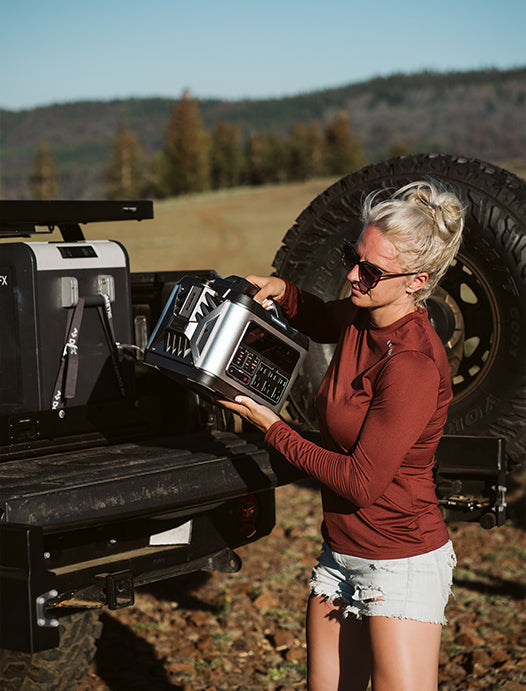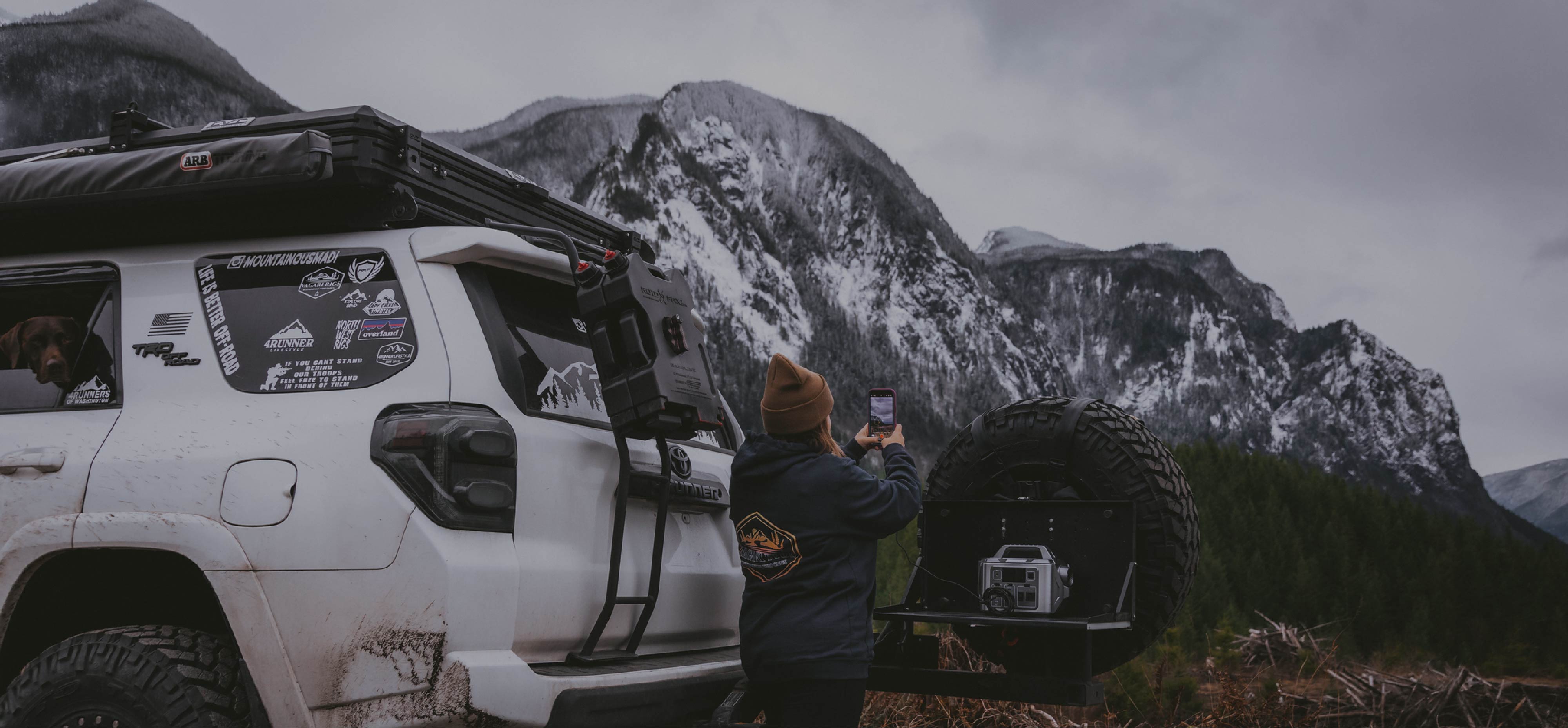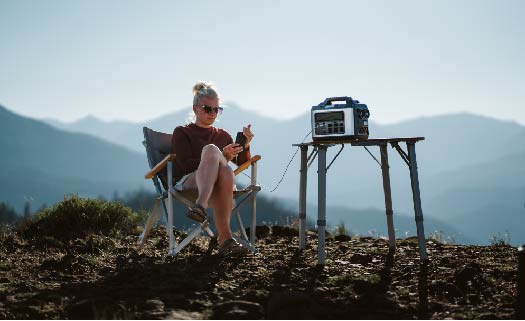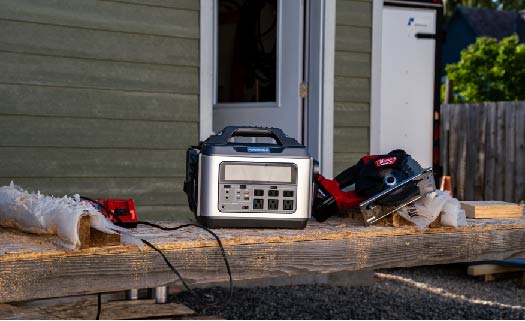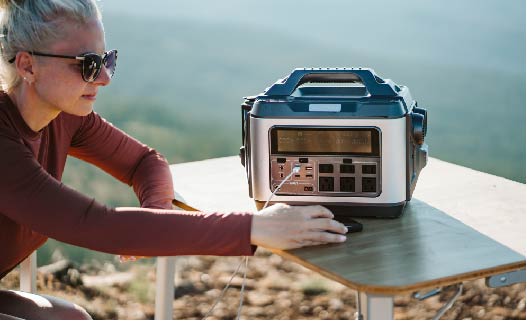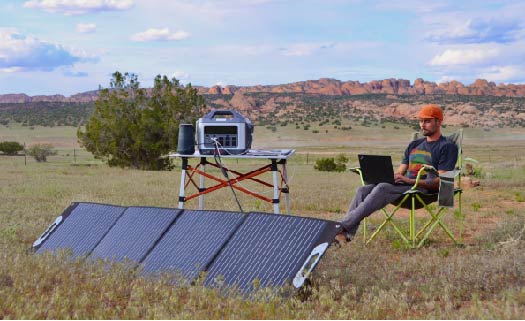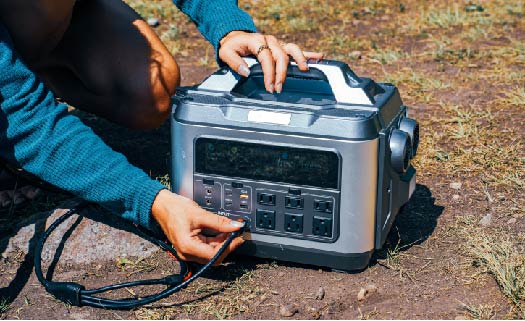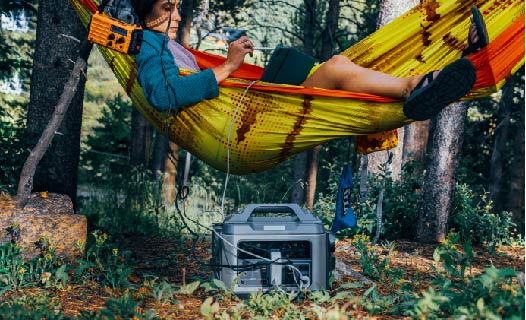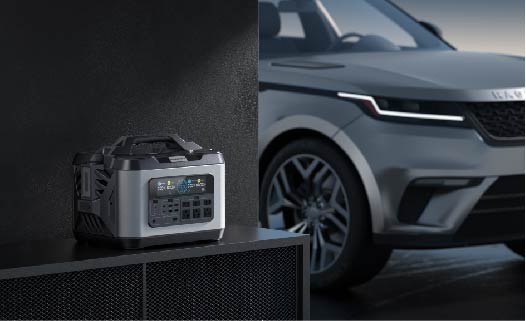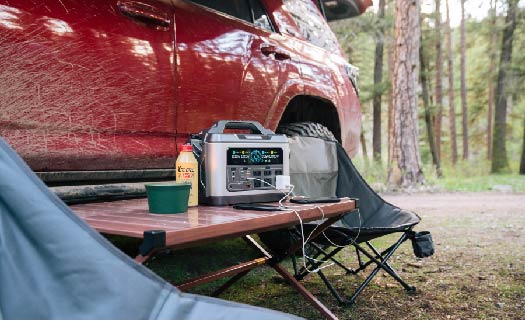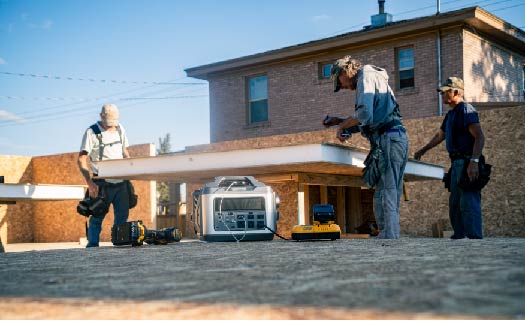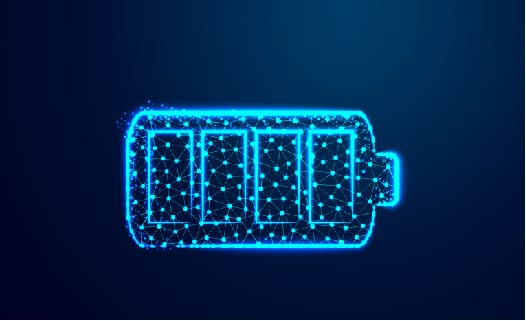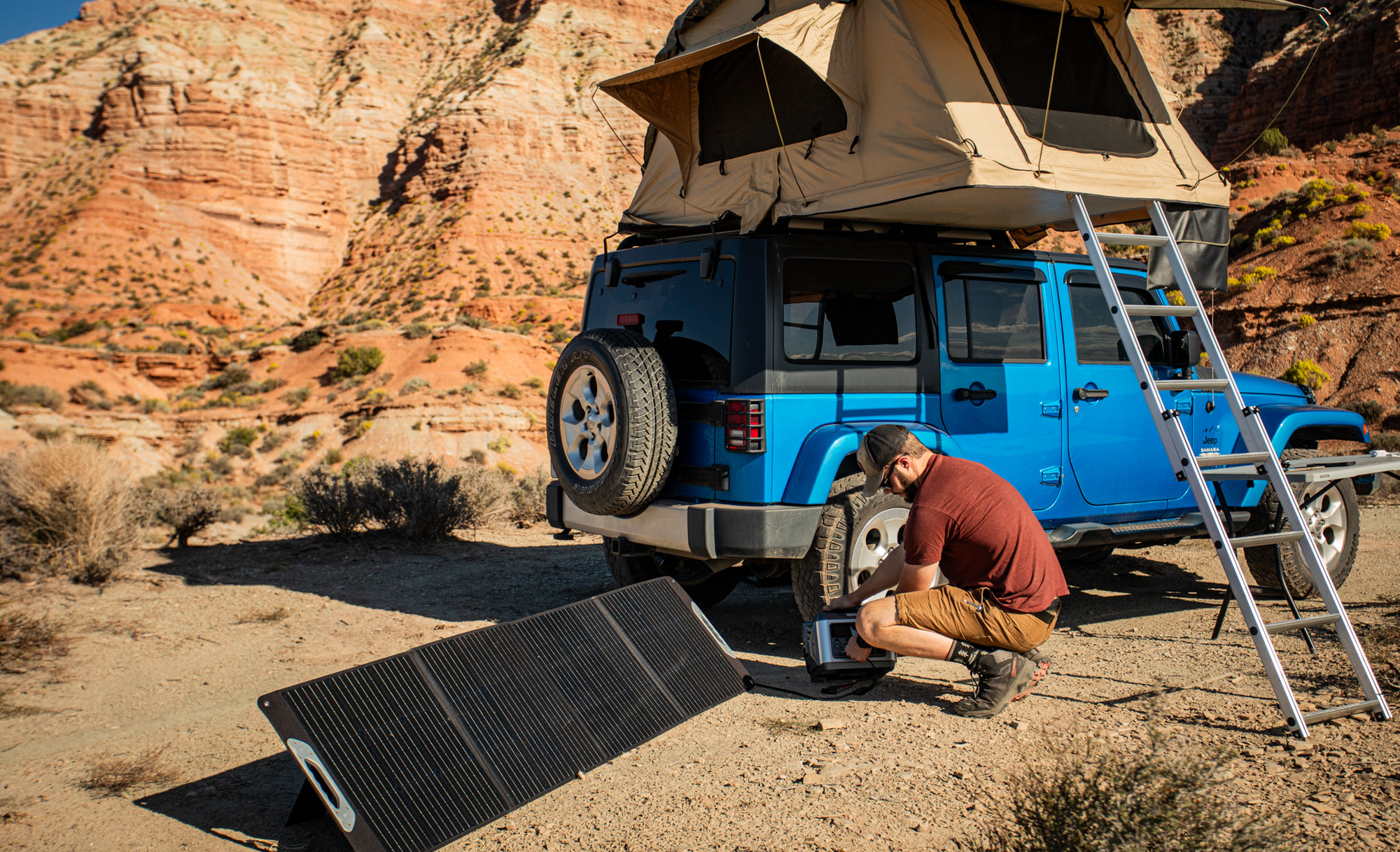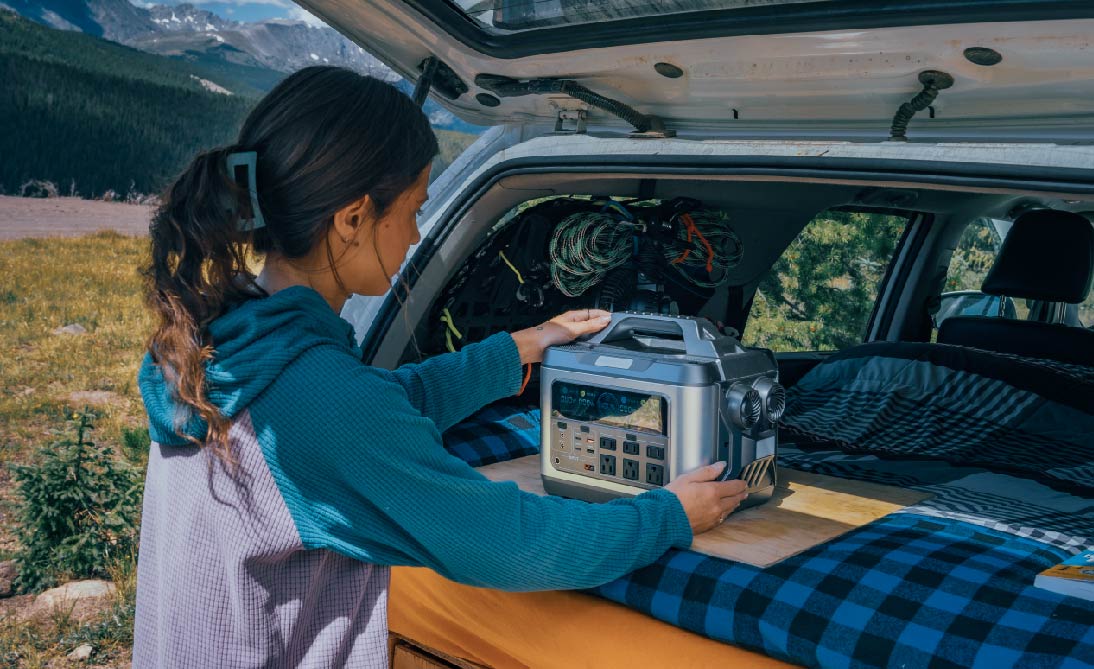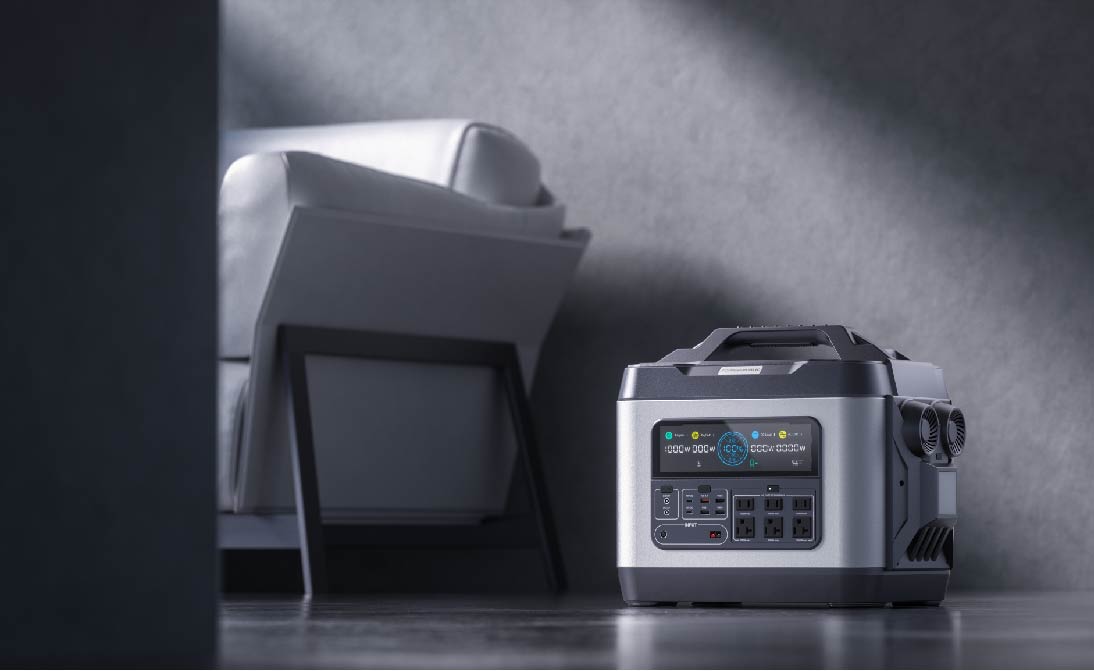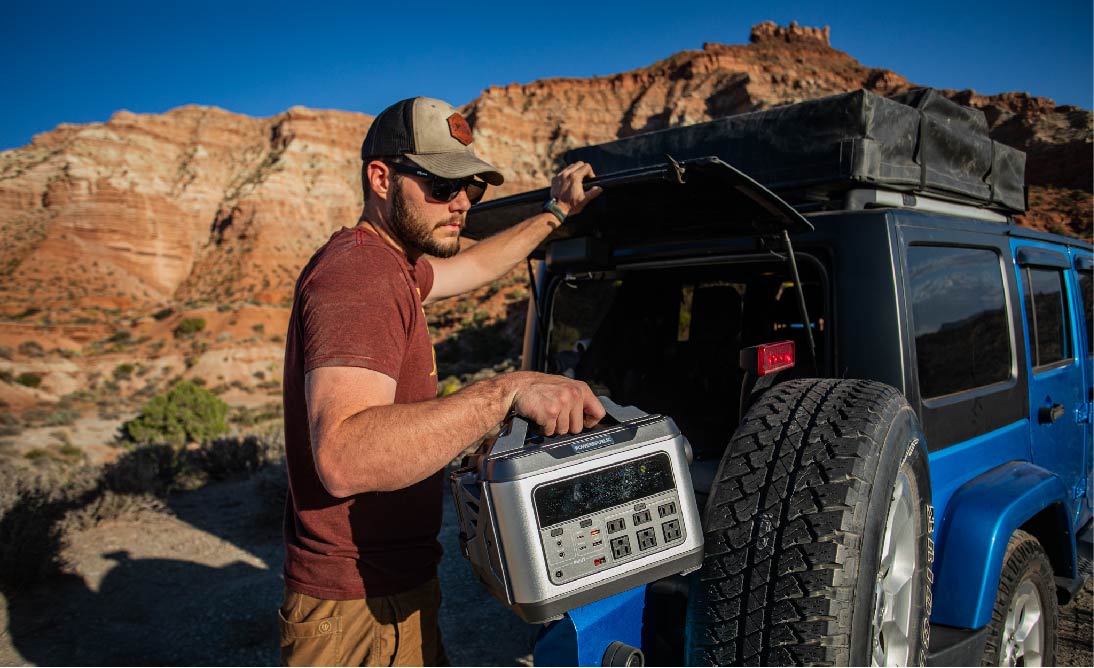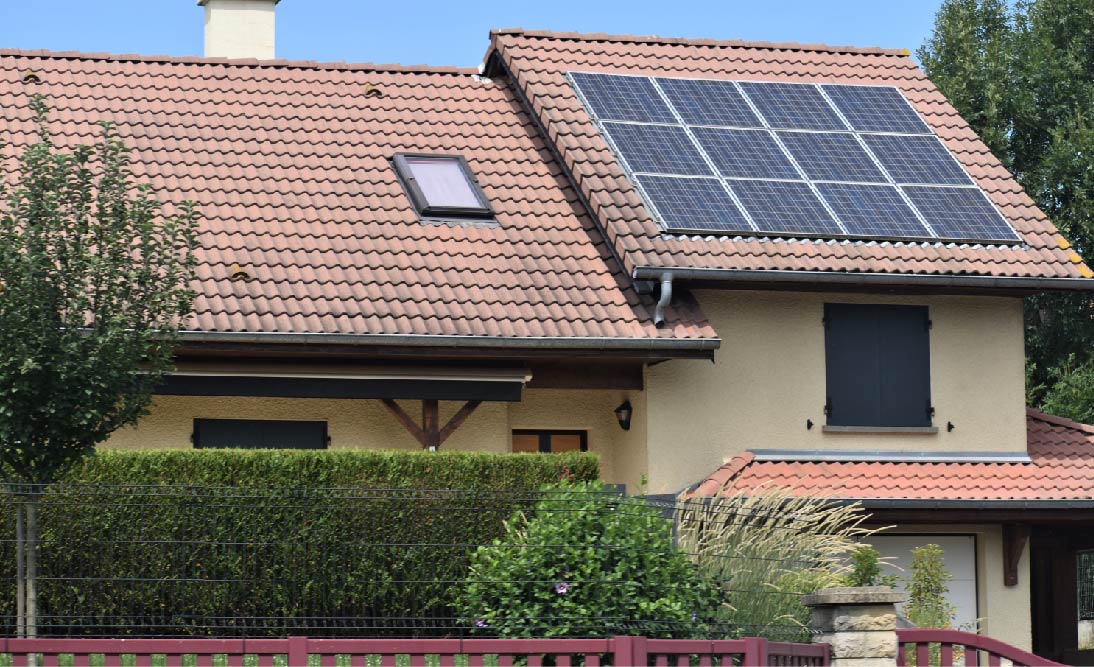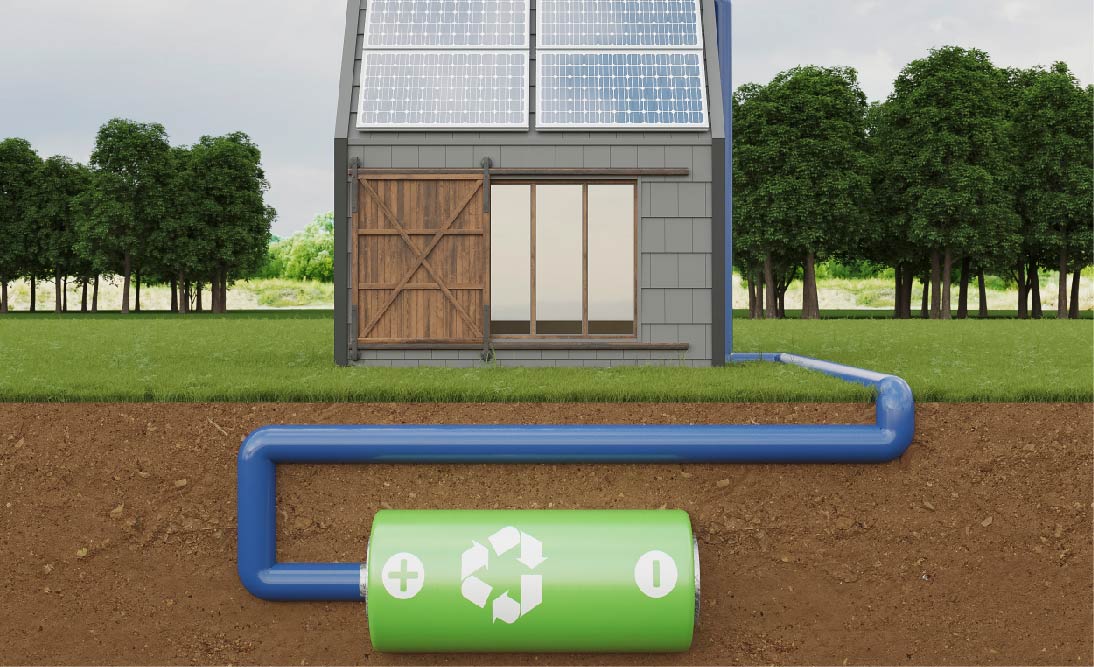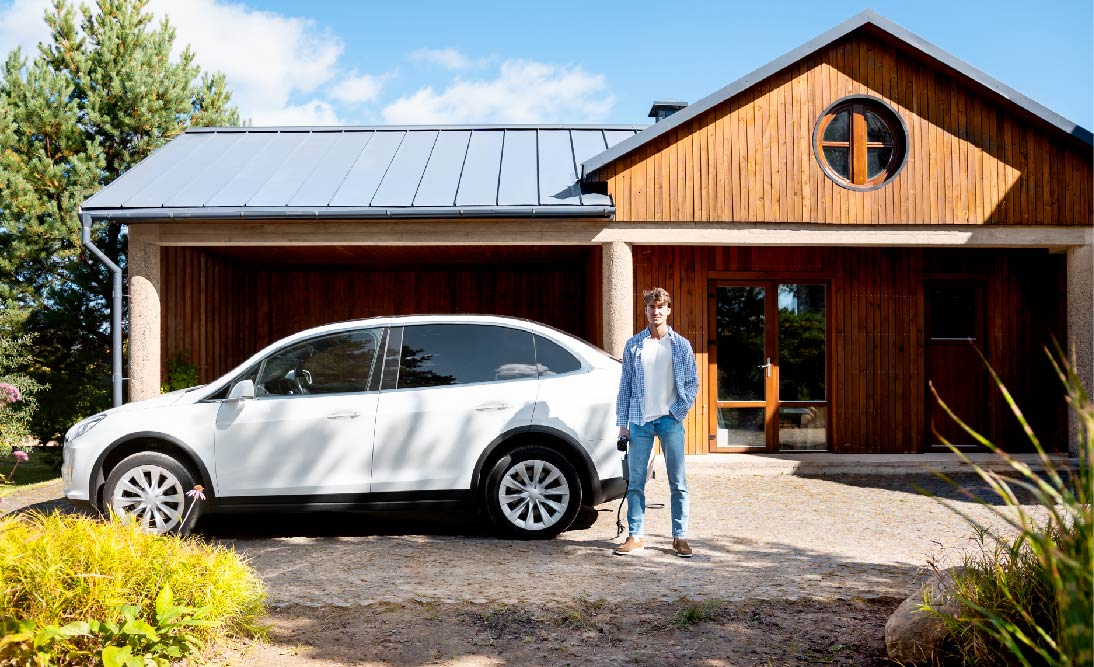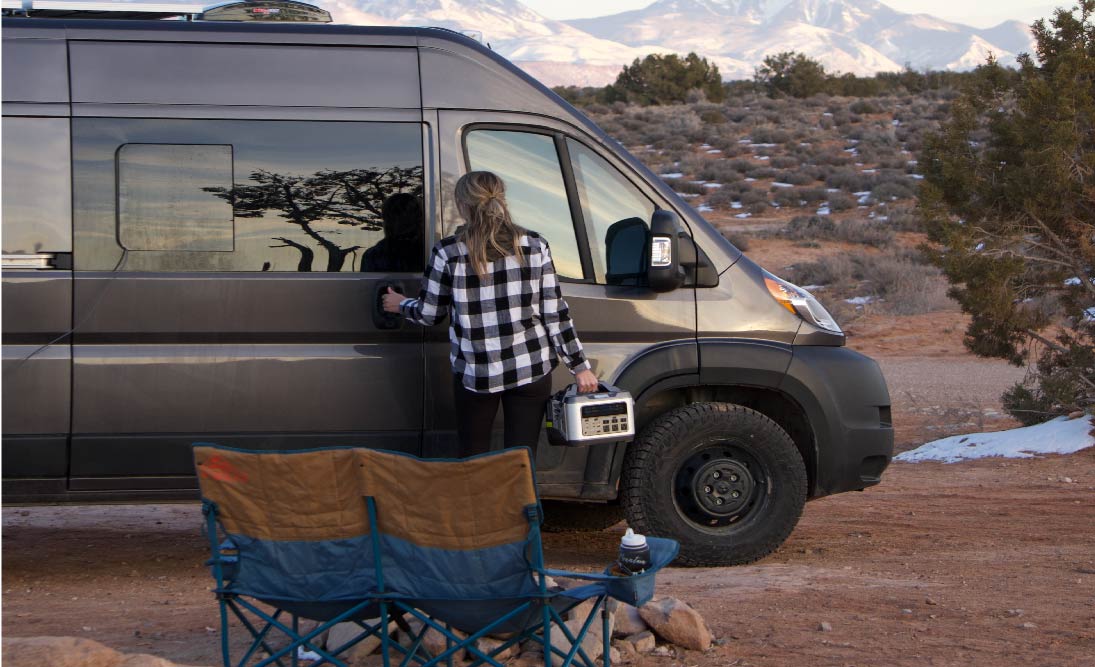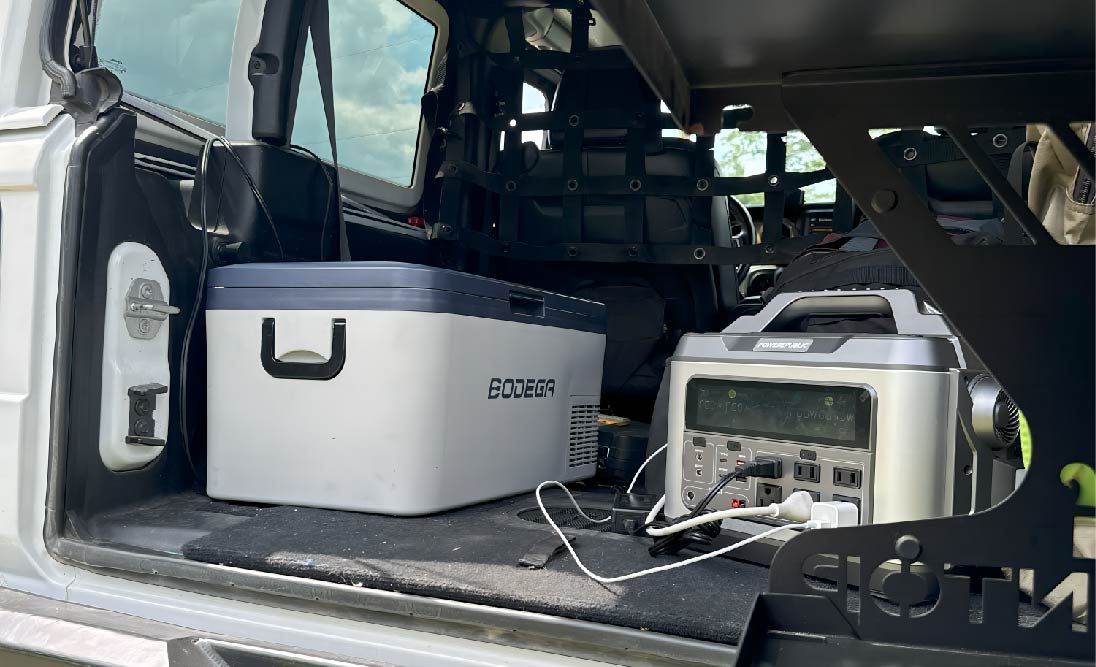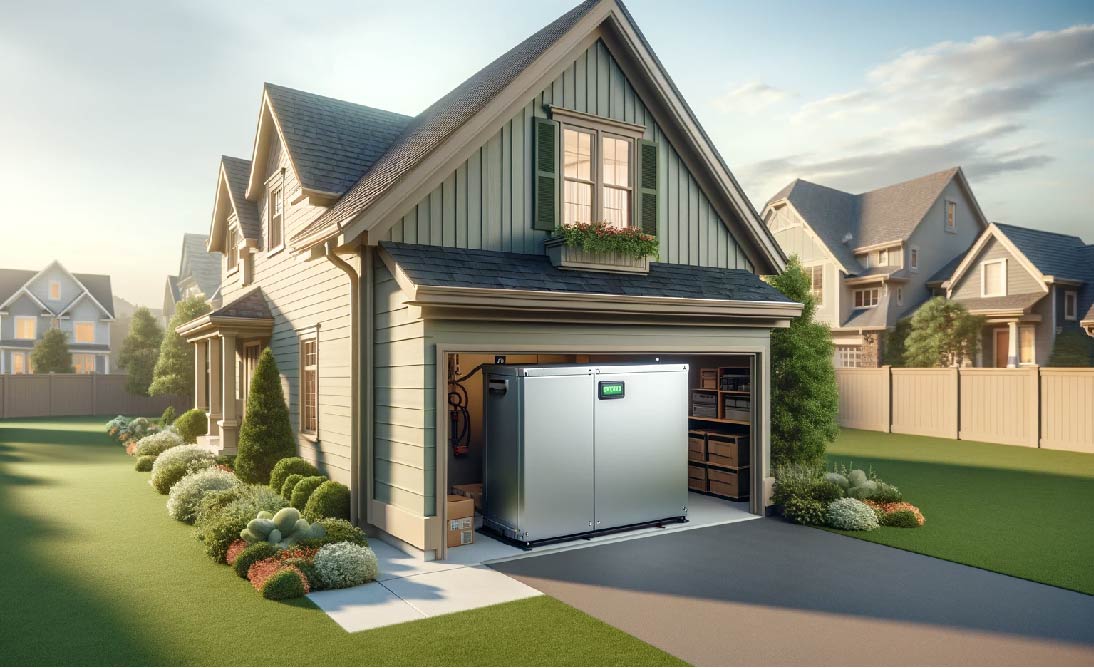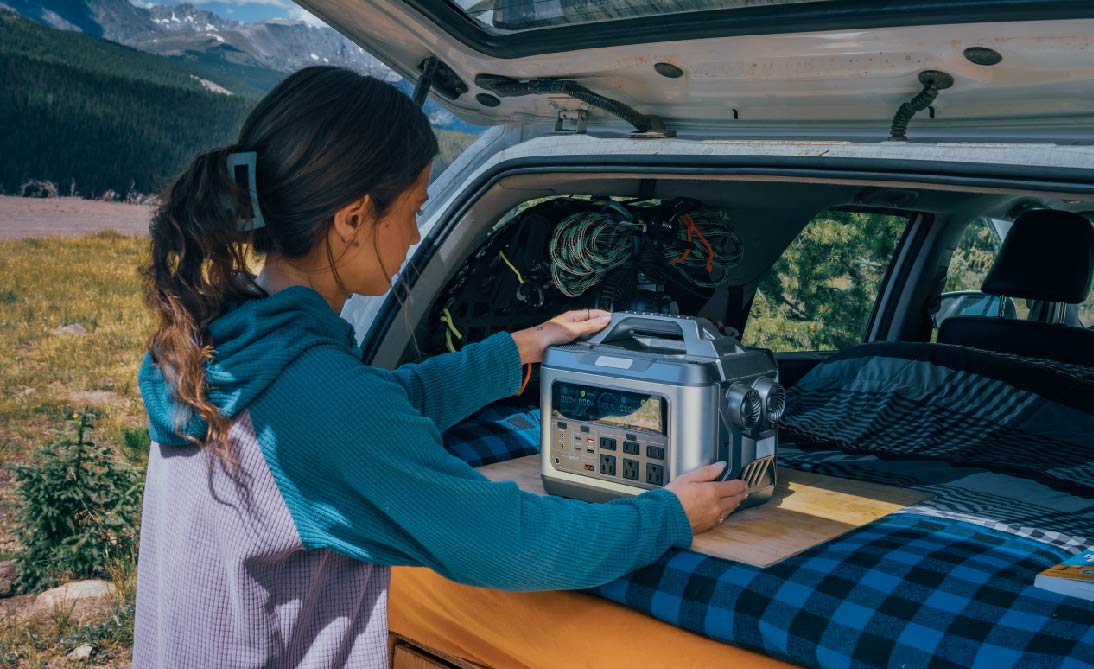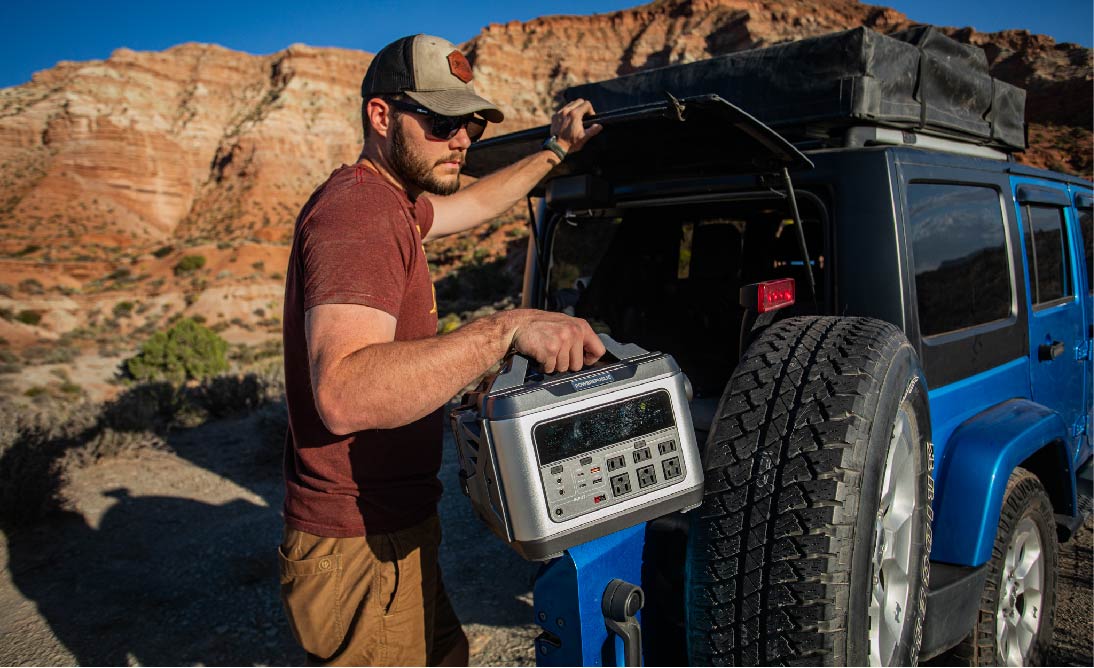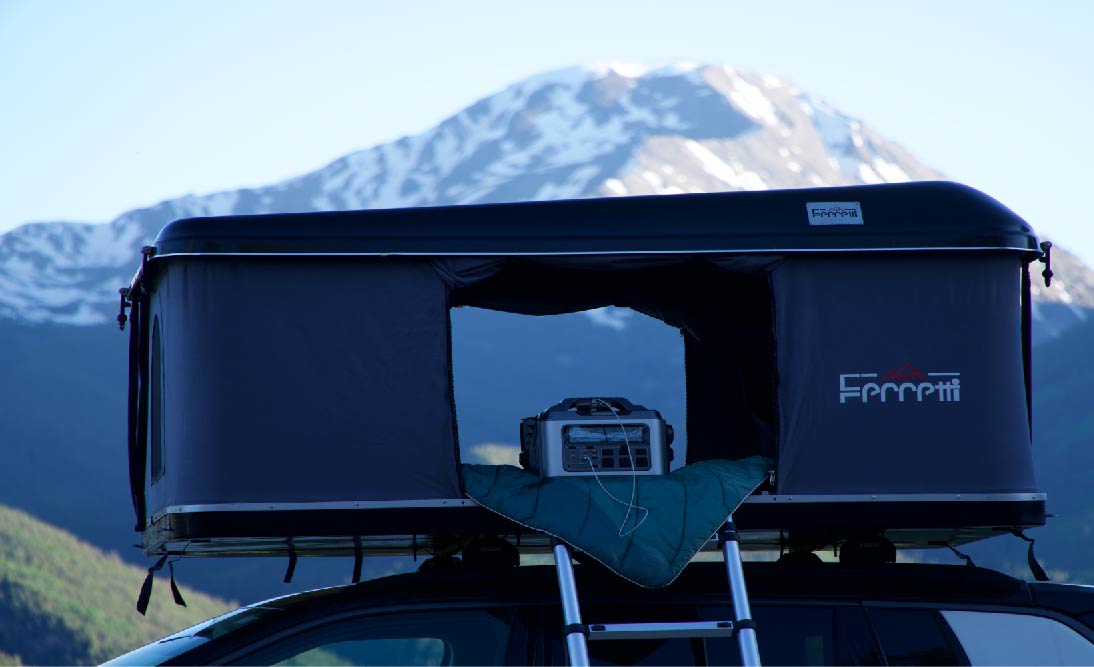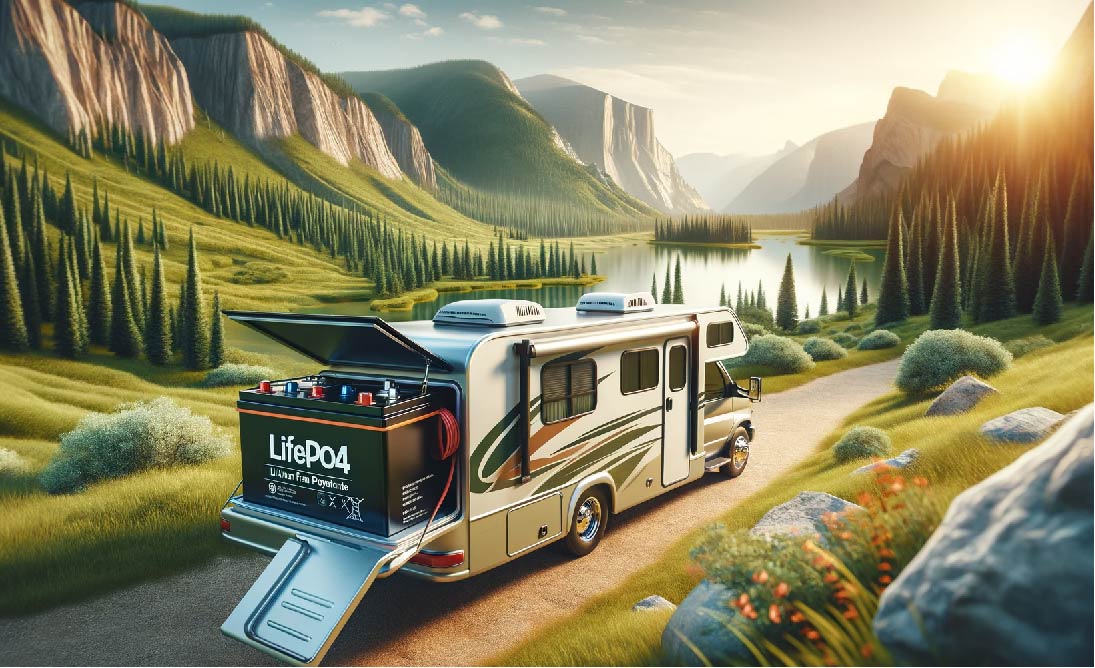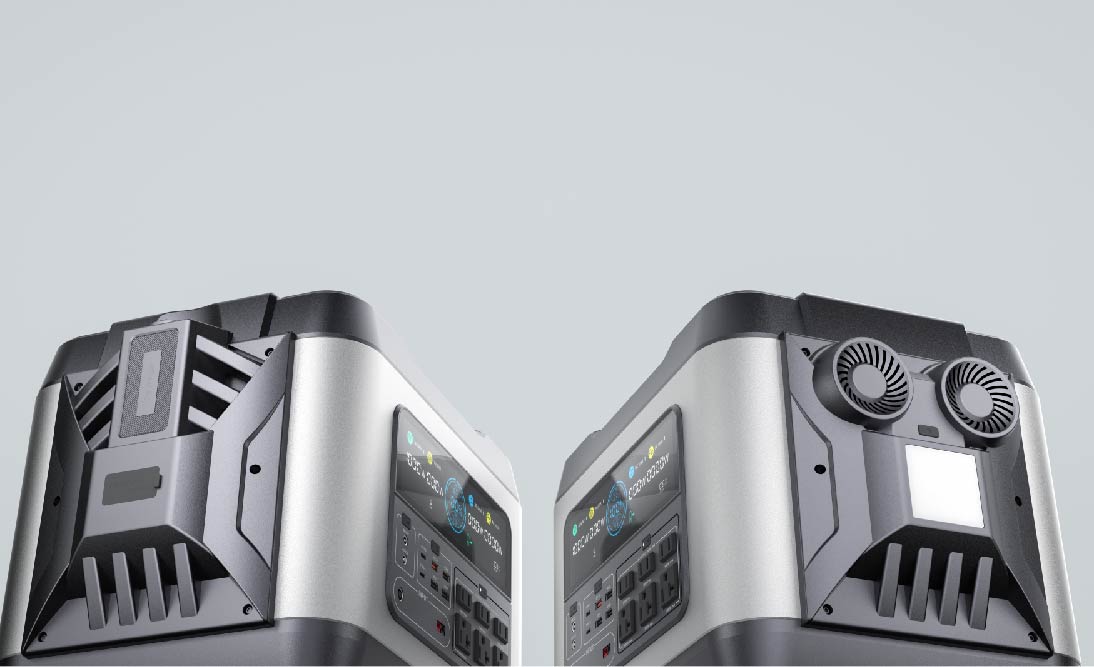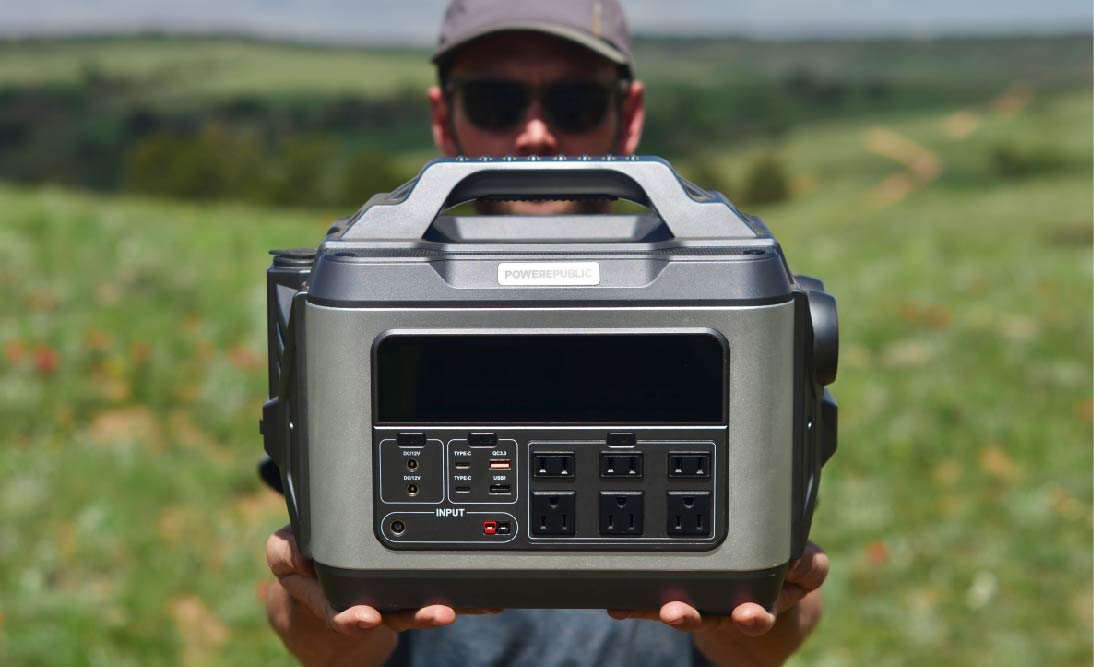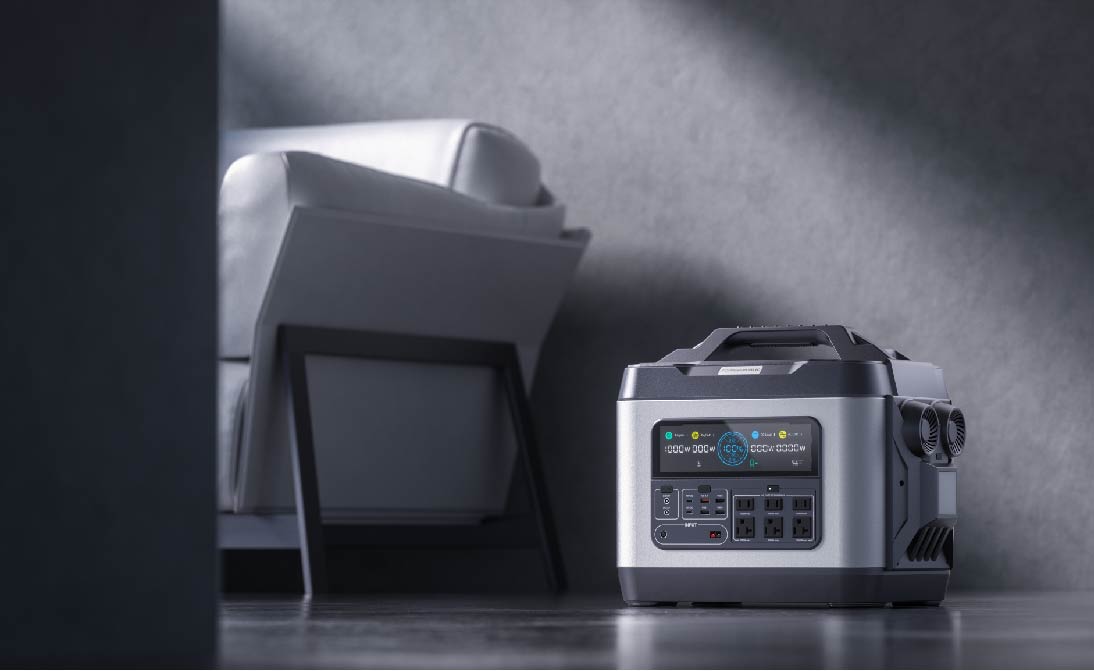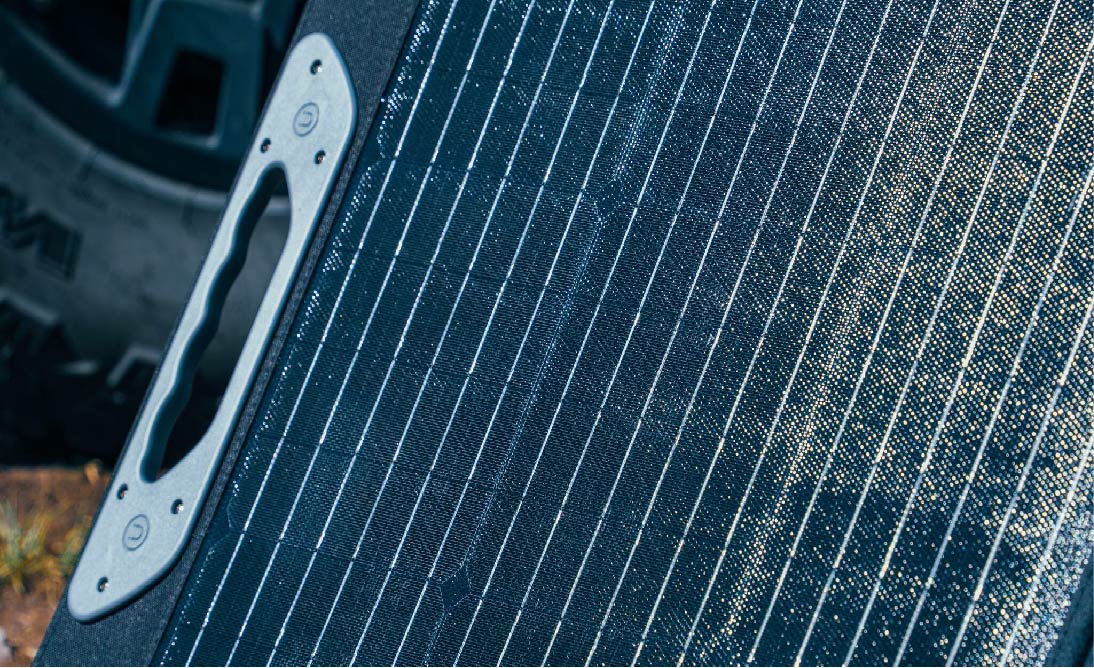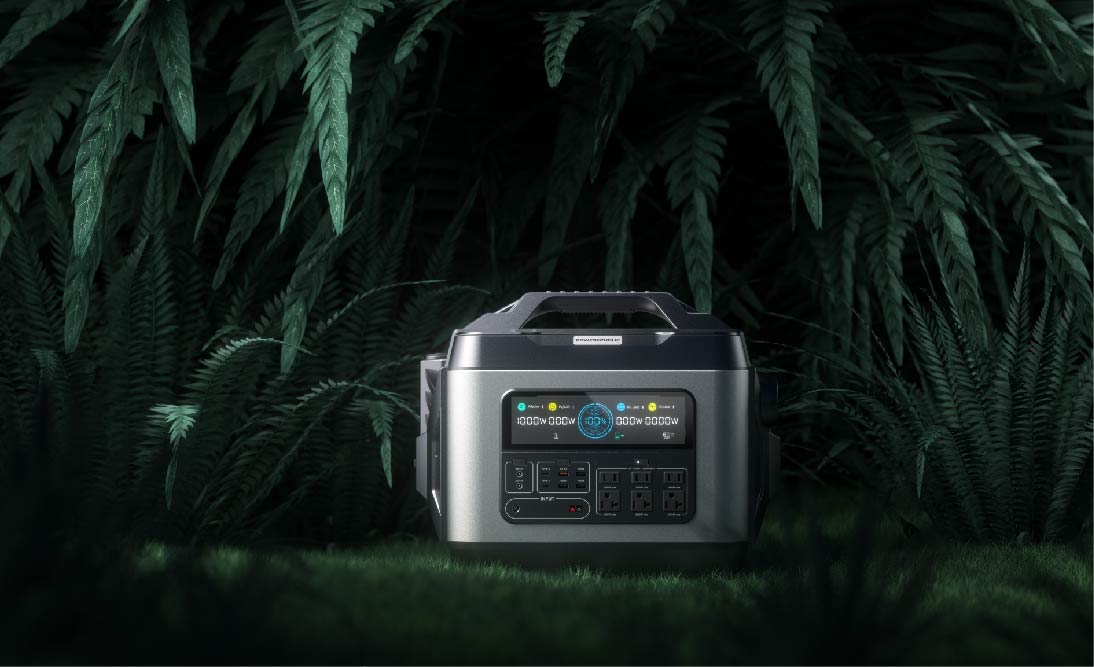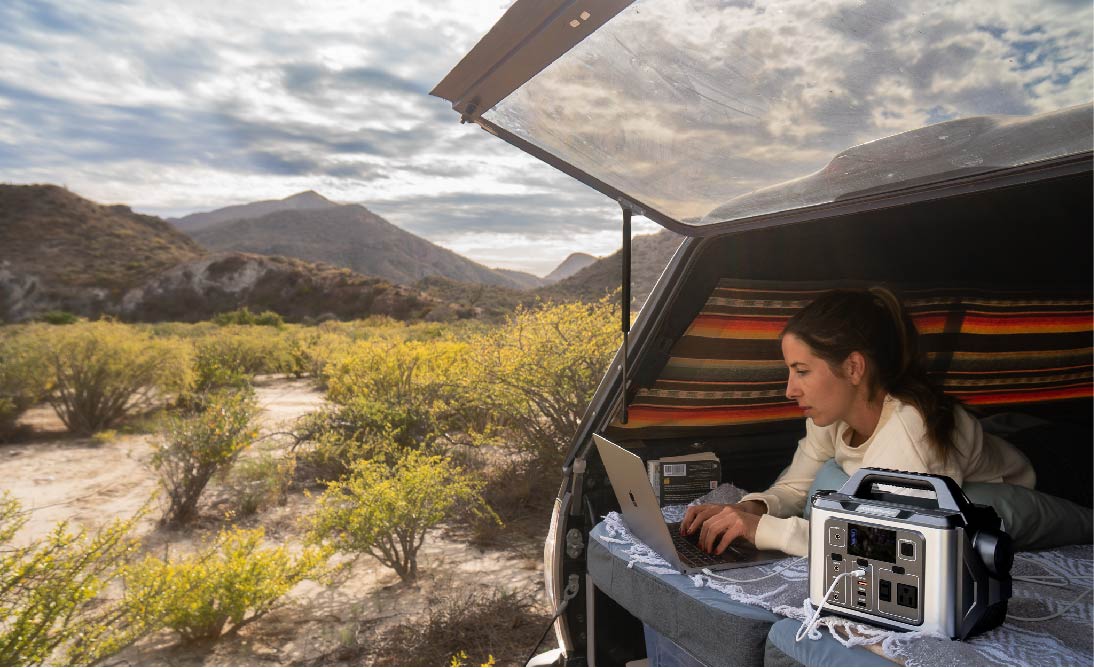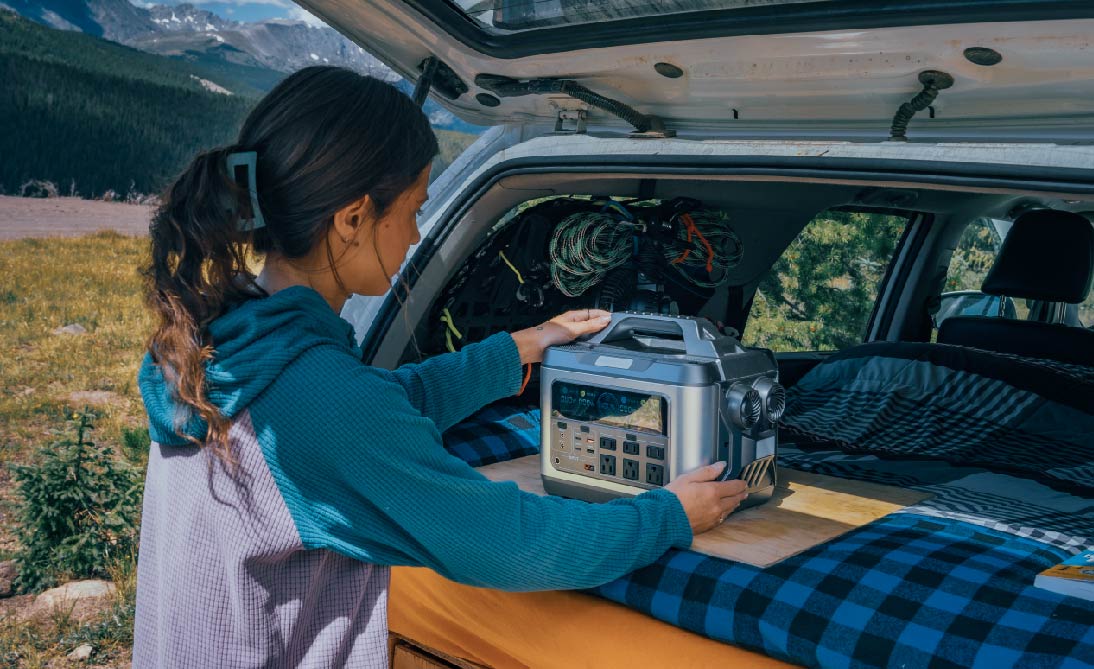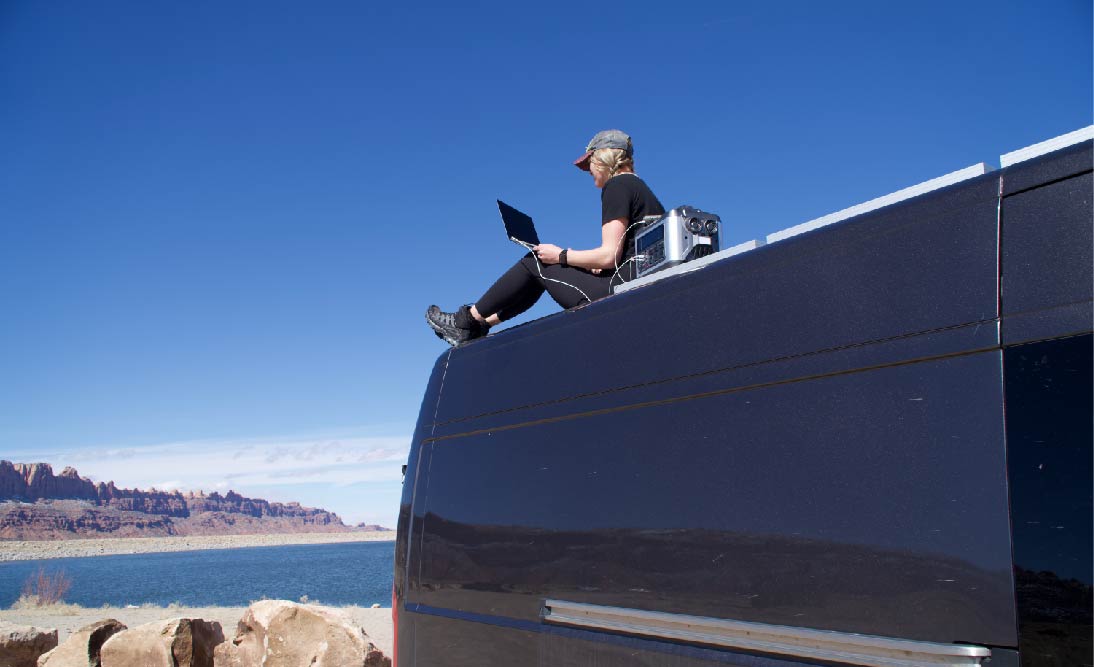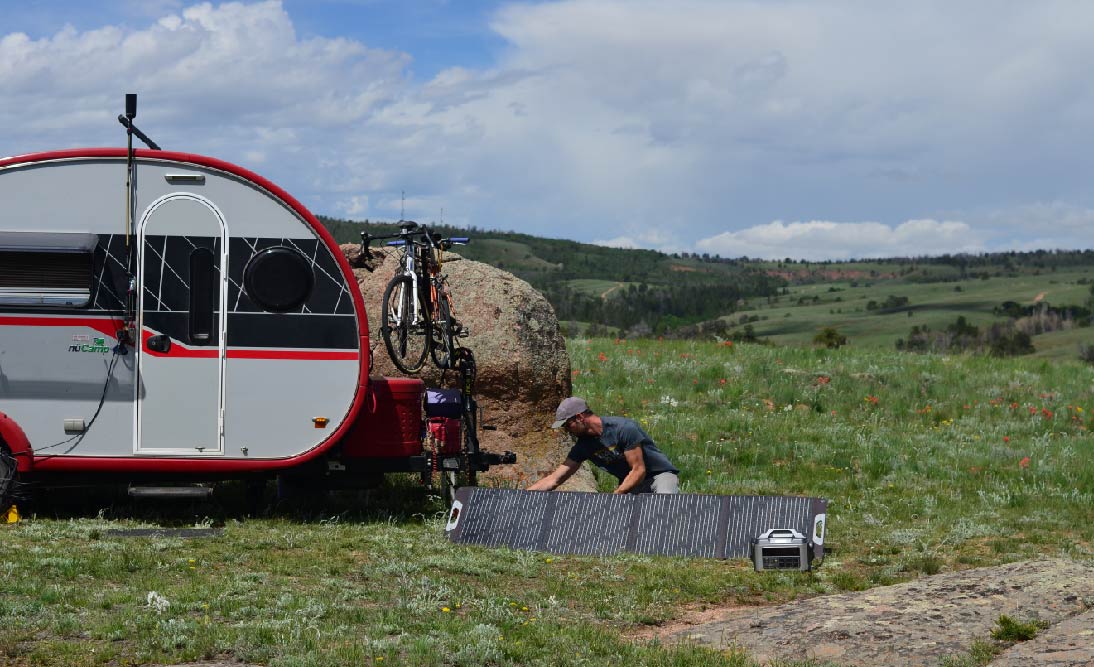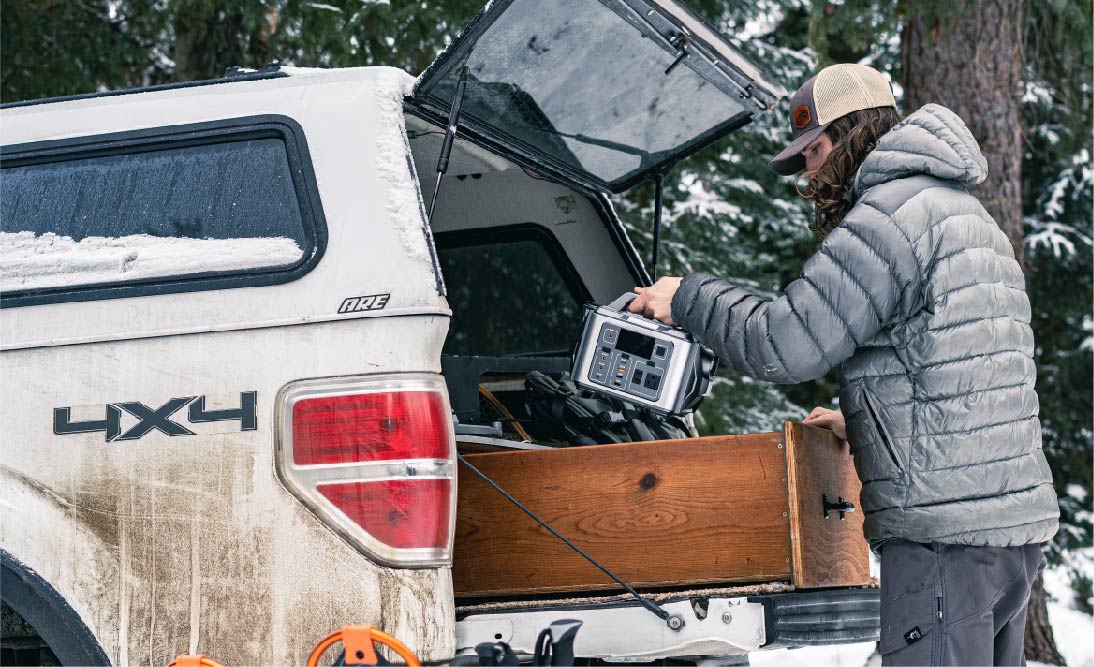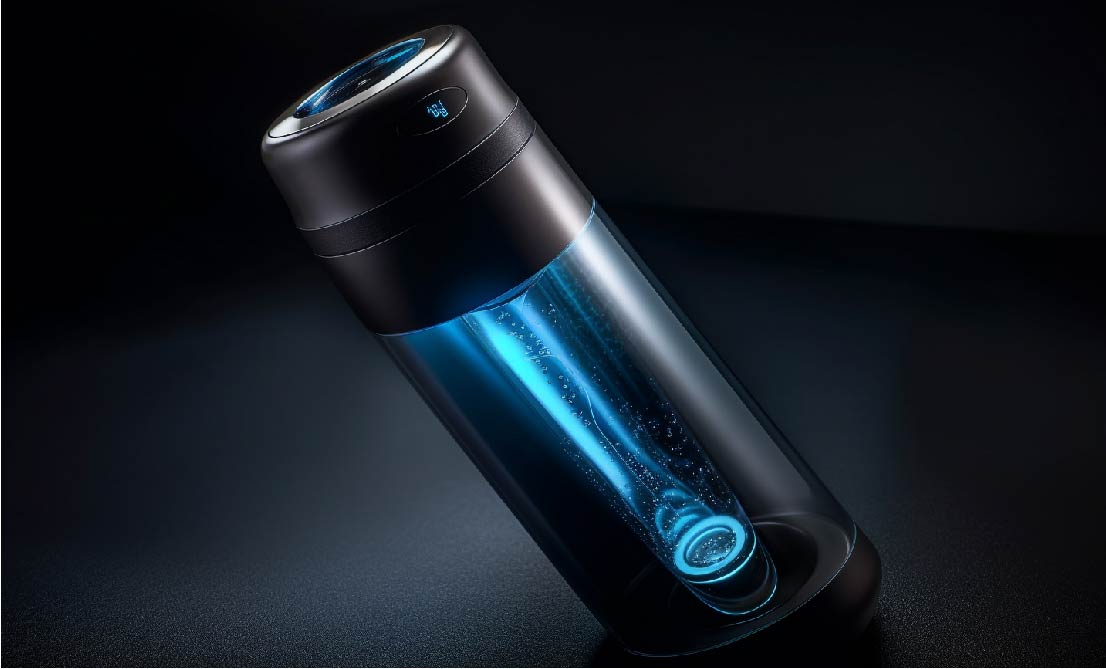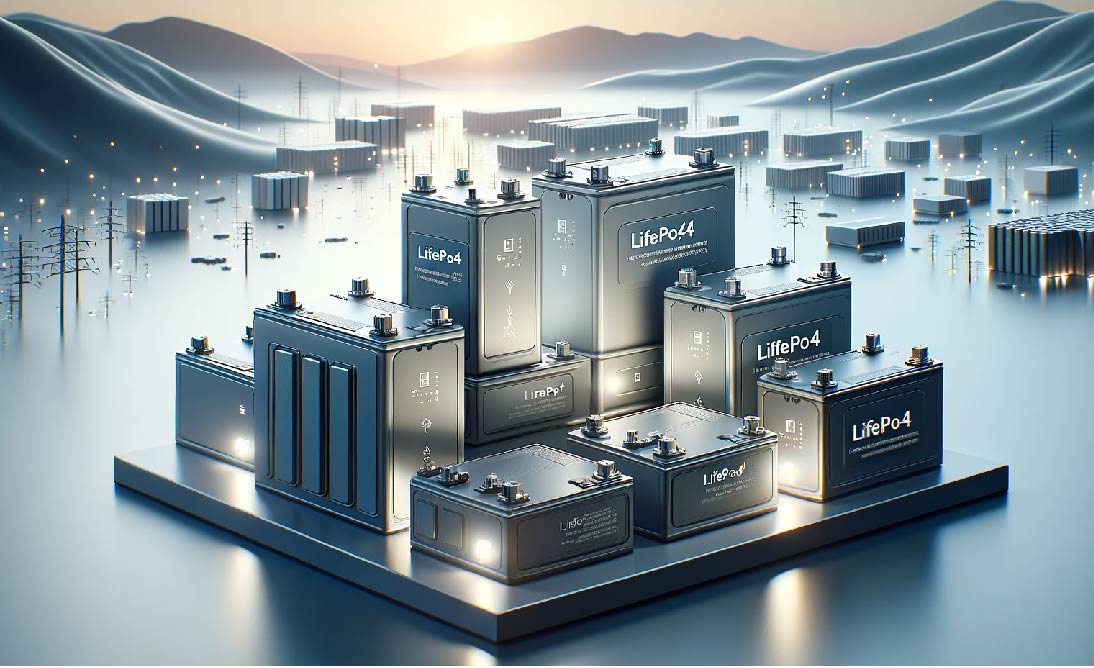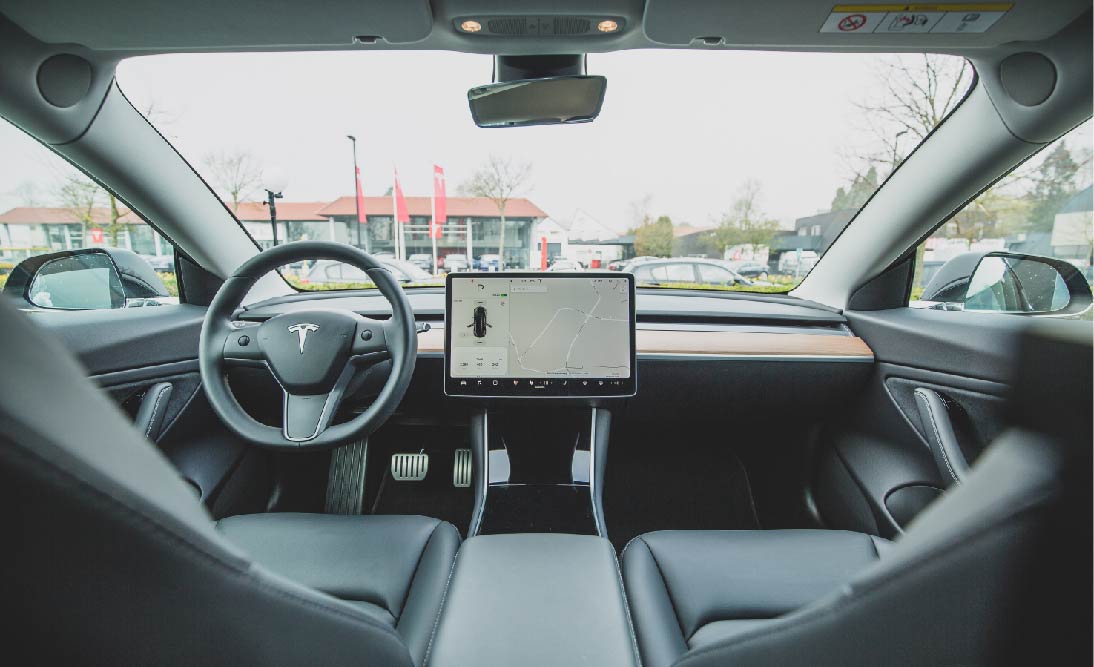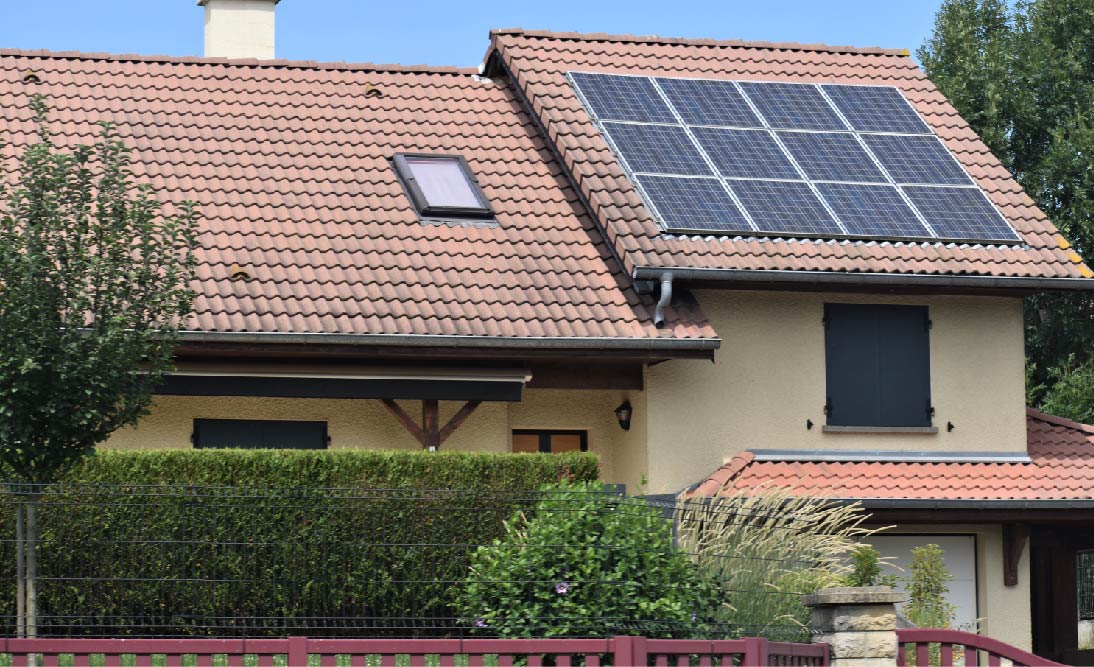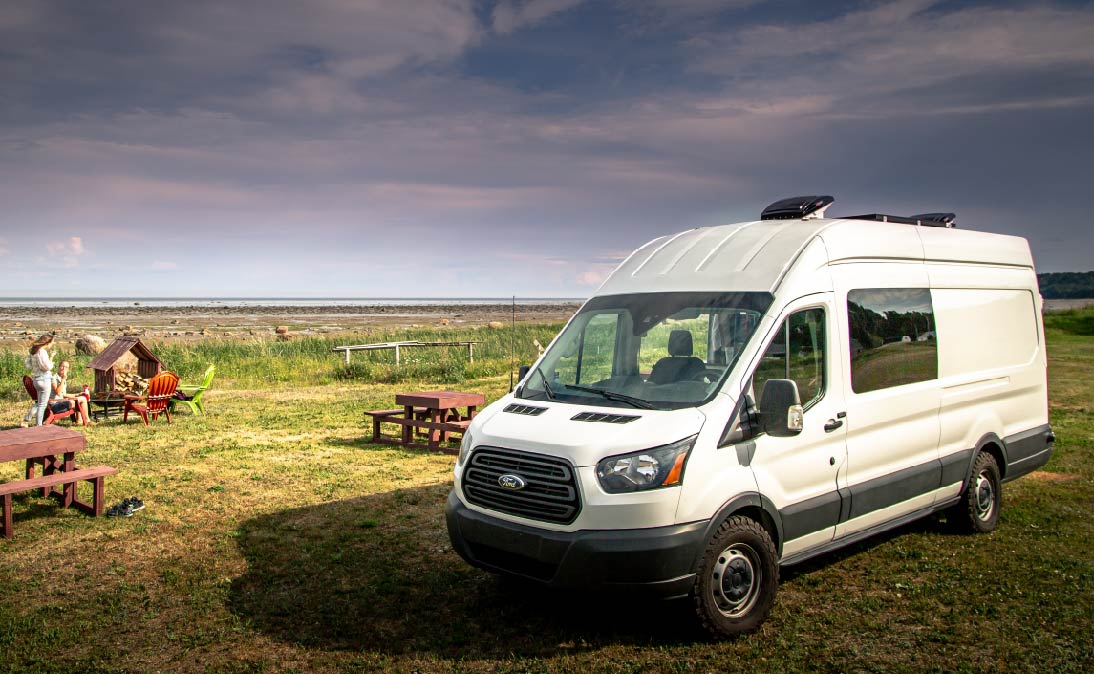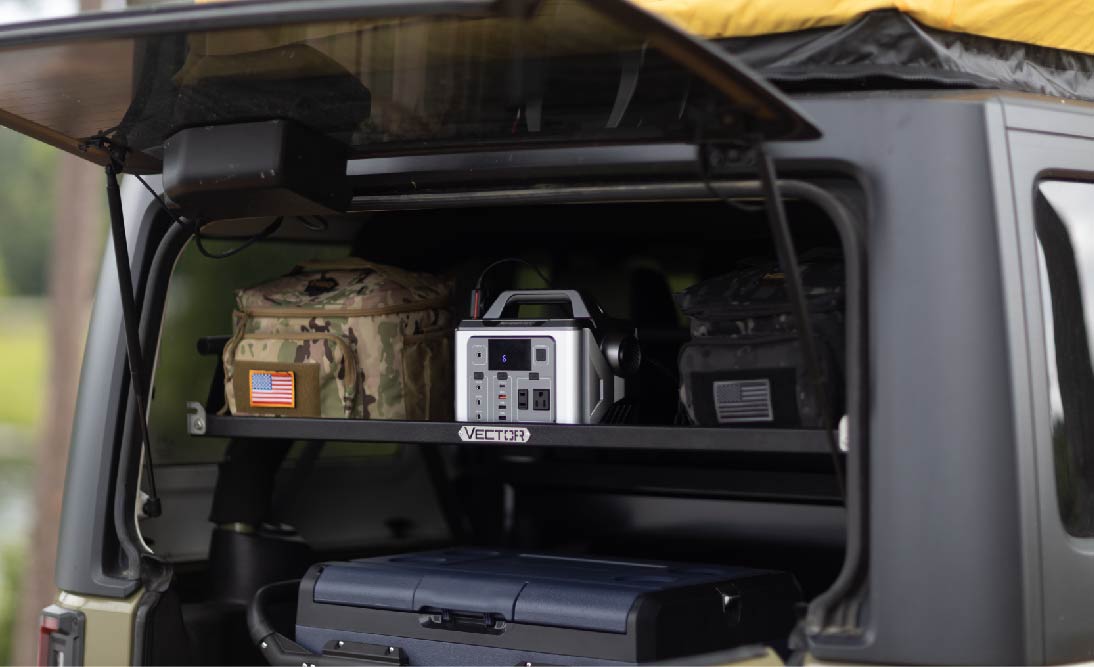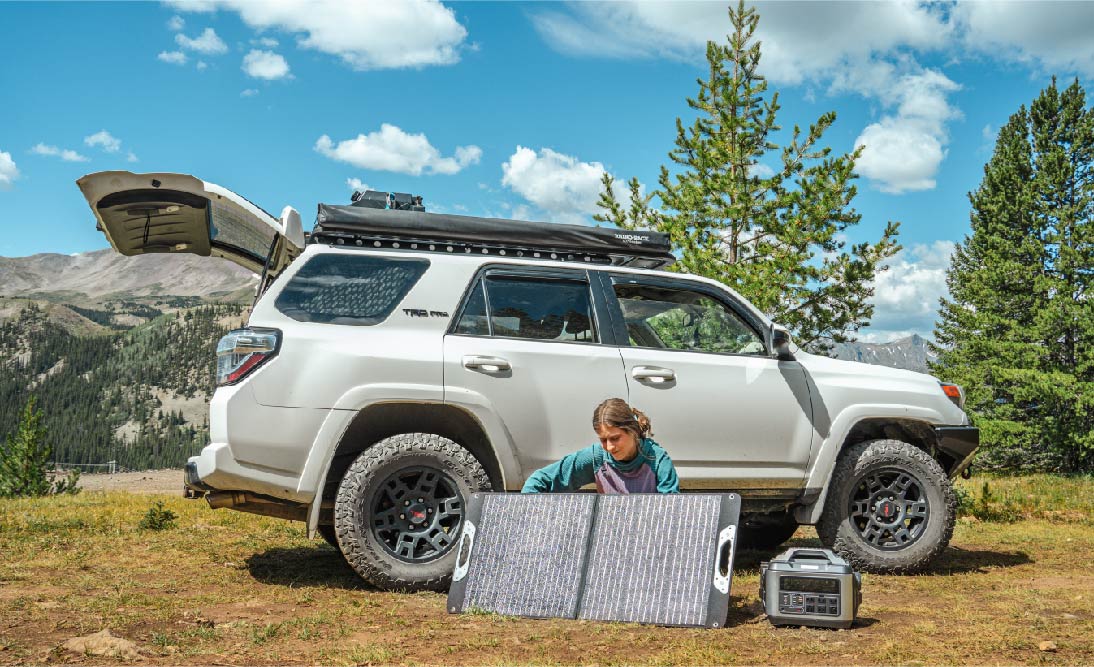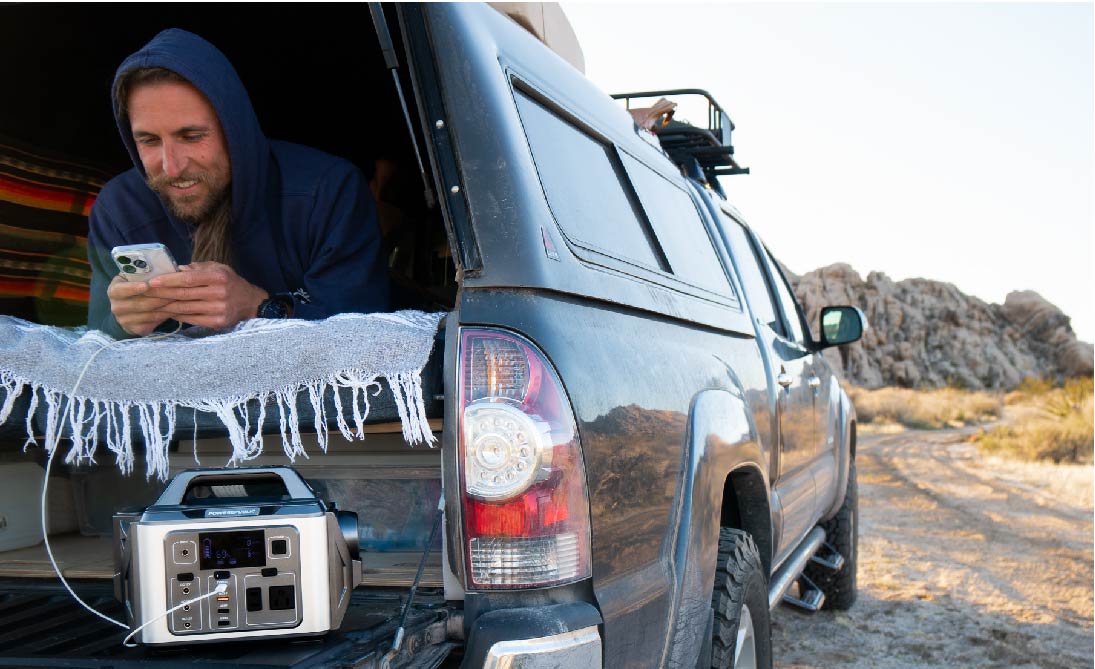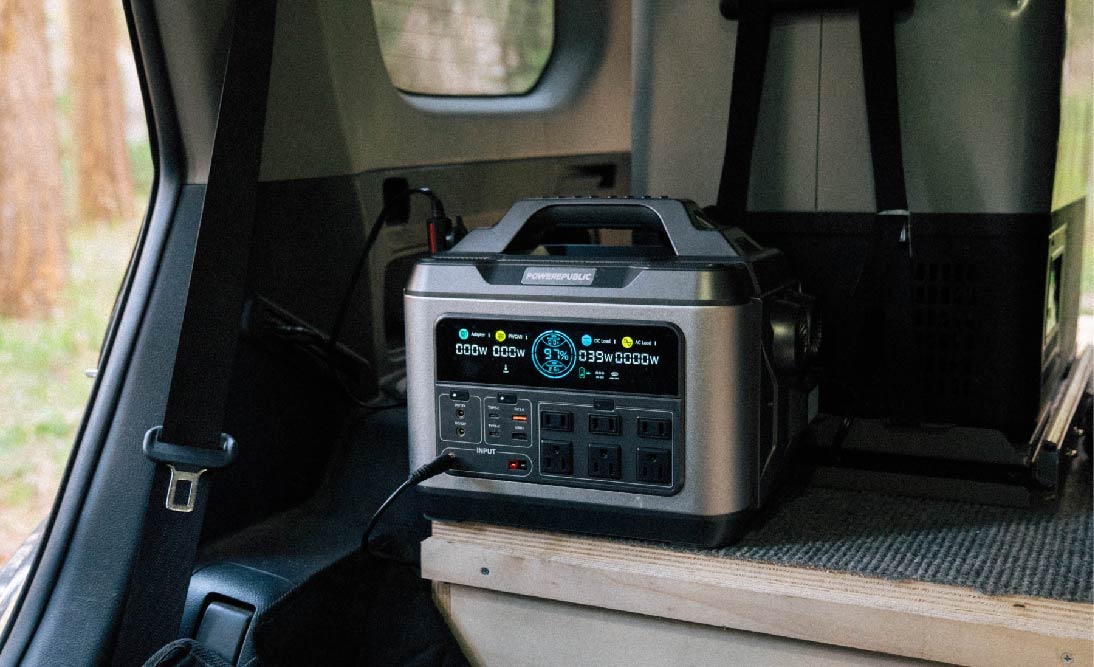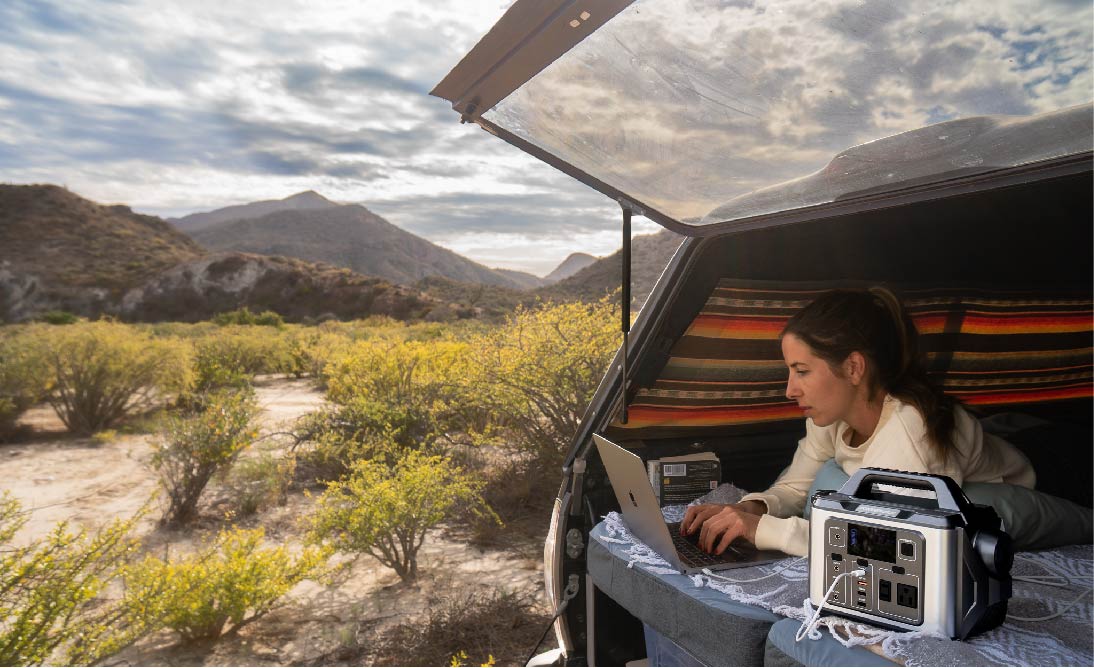Table Of Contents:
As a significant number of individuals engage in outdoor activities such as camping, car camping, boondocking, overlanding, Vanlife, and RV life, having reliable power solutions becomes essential to enhance outdoor and off-grid experiences. While vans and RVs often have their solar systems to power the entire motor home, having a secondary battery for backup during extreme weather conditions and emergencies can be advantageous.
This is where lithium-ion power stations have gained popularity among outdoor enthusiasts. In this article, we'll provide a brief guide about DIY power stations, explain how they differ from portable power stations and traditional generators, discuss how to create DIY power stations, outline their pros and cons, and introduce POWEREPUBLIC portable power stations as one of the options for a DIY power station.
We hope you find this article informative. Let's get started.
What is a DIY Power Station?

A DIY power station is a customized power generation and storage system that individuals create themselves. It involves assembling various components to generate, store, and utilize electrical power according to your specific requirements. DIY power stations can serve various purposes, such as providing backup power, enabling off-grid living, or supporting outdoor activities like camping and RVing.
The essence of a DIY power station is that you have to 'do it yourself' (DIY). Therefore, it requires a certain level of professional expertise and hands-on experience. If you are a passionate DIYer, it may seem easy to you, but if not, you may want to consider consulting a professional before attempting to build one.
The main components of a DIY power station typically include:
-
Power Source: This can be solar panels, wind turbines, generators, or a combination of these. Solar panels are the most common choice for renewable energy generation in DIY power stations these days.
-
Battery or Energy Storage: These store the electrical energy generated for later use, especially when the power source is not actively producing electricity (e.g., at night or during cloudy days). Lithium-ion batteries are often used due to their high energy density and efficiency.
-
Inverter: An inverter converts the stored DC (direct current) electricity from the battery into AC (alternating current) electricity, which is what most household appliances and devices use.
-
Charge Controller: In systems with solar panels, a charge controller is used to regulate and optimize the charging of the battery to prevent overcharging and ensure efficient energy storage.
-
Wiring and Connectors: These are essential for connecting all the components and ensuring proper electrical flow.
Together, these five important components make up a DIY power station. Knowing them will help you better understand how to create and operate your own power generation and storage system.
What Are The Differences Between a DIY Power Station And A Potable Power Station?

A portable power station, also known as a portable power generator, is an all-in-one and compact unit designed to provide electrical power for various devices and appliances when you're away from traditional power sources. It's essentially a portable battery or generator that can store energy and supply it as needed. Portable power stations have gained popularity for outdoor activities, camping, emergency backup power, and as a convenient power source for various applications. Based on battery types, there are two main types of portable power stations: one is called a lithium-ion power station, and the other is called a LiFePO4 power station.
As mentioned above, for a DIY power station, you will need a power source, battery, inverter, charge controller, and connectors. Portable power stations are much more convenient since all these five components are installed in a single unit. This means you don't have to spend a lot of time figuring out the specifications for each of these components.
Let's break down the differences between them.
DIY Power Station
-
Customized Solution: DIY power stations are customized by individuals, allowing you to tailor them to your specific power needs and preferences. You can choose components such as the type of battery, inverter capacity, and charge controller that best suit your requirements.
-
Flexibility: You have the flexibility to choose the specific components, capacities, and designs, making it highly customizable. For example, you can select a larger battery for extended power backup or a more powerful inverter for running heavy appliances.
-
Installation and Maintenance: DIY power stations typically require more technical knowledge and effort for installation and maintenance. This might involve assembling the components, and wiring, and ensuring proper safety measures. It's suitable for those with technical skills and a desire for a tailored solution.
-
Cost: The cost can vary widely depending on the components chosen and the scale of the system. DIY projects can be more cost-effective for those willing to invest time and effort. You can save money by selecting components that fit your budget, but it may require researching and shopping for the best deals.
Portable Power Station
-
Pre-Made Solution: Portable power stations are commercial products that come preassembled and ready to use. All necessary components, including the battery, inverter, charge controller, and connectors, are integrated into a portable device.
-
Ease of Use: They are designed for quick and easy setup. Portable power stations often come with multiple outlets, USB ports, and inverter capabilities for various devices. You don't need to spend time assembling or configuring the components – simply plug in your devices and use them.
-
Mobility: Portable power stations are compact and lightweight, making them highly mobile. They are suitable for various scenarios, such as outdoor activities, and camping trips, and as a reliable source of emergency backup power during power outages.
-
Cost: Portable power stations are generally more expensive on a per-watt basis compared to DIY solutions due to their convenience and ready-to-use nature. While you pay a premium for this convenience, it may be justified by the time and effort saved in not having to build and configure a DIY system.
So the primary difference between DIY power stations and portable power stations lies in the level of customization, the complexity of installation, the technical expertise required, and the convenience of a pre-made solution. Your choice will depend on your specific needs, technical skills, and preference for customization.
If you are a knowledgeable DIYer with a limited budget, taking your time to build a DIY power station would be a better choice for you. A portable power station would be a better option if you value convenience and time.
Compared To Traditional Generators, Why Do You Need a DIY Power Station For Camping

A traditional generator, often referred to as a portable generator, is a device that generates electrical power by using a fuel-powered engine to turn a generator or alternator. These generators are typically designed to provide temporary or backup electrical power in situations where access to a reliable grid power source is limited or during power outages. They come in various sizes, from small, portable models suitable for camping to larger units used for emergency backup power in homes and businesses.
While both DIY power stations and traditional generators offer reliable power backup for camping and off-grid living, DIY power stations offer more benefits than traditional generators:
-
Noise Level: One of the key advantages of DIY power stations for camping is their significantly lower noise level. Traditional generators can be quite noisy, emitting a constant mechanical hum, which can disrupt the peaceful ambiance of a camping trip. In contrast, DIY power stations, especially those based on battery and inverter technology, operate silently, ensuring a quieter and more enjoyable camping experience.
-
Environmental Impact: DIY power stations are generally more environmentally friendly. Traditional generators often run on fossil fuels like gasoline or diesel, producing exhaust emissions that can be harmful to the environment. In a camping setting, where nature and clean air are appreciated, DIY power stations, particularly those powered by renewable energy sources like solar panels, are a cleaner and greener alternative.
-
Portability: DIY power stations can be designed to be highly portable and easy to transport. Traditional generators are typically bulkier, heavier, and less convenient to move around, making them less suitable for remote or off-grid camping locations where mobility is crucial.
-
Ease of Use: DIY power stations are user-friendly and require minimal technical expertise to operate. Traditional generators may demand more knowledge to start and maintain, including fuel refilling, oil changes, and maintenance of mechanical parts. DIY power stations eliminate the complexity and hassle associated with traditional generators.
-
Reduced Fuel Dependency: Traditional generators rely on a constant supply of fuel, which can be challenging to obtain in remote camping areas. DIY power stations, especially those using solar panels or other renewable sources, reduce your dependence on external fuel sources. This means you can enjoy extended power availability without worrying about refueling.
-
Low Maintenance: DIY power stations are generally low maintenance. They have fewer moving parts and don't require fuel, reducing the need for routine maintenance compared to traditional generators. This allows you to spend more time enjoying your camping trip rather than maintaining equipment.
-
Safety: DIY power stations can be designed with safety features like surge protection, overcharge protection, and short-circuit protection. This makes them a safer option compared to some traditional generators, which may pose safety risks due to their mechanical components and fuel handling.
-
Customization: DIY power stations offer the flexibility to tailor the system to your specific camping needs. You can choose the battery capacity, inverter size, and components that match your power requirements. Traditional generators may have fixed specifications, limiting their adaptability.
DIY power stations are a more suitable option for camping when compared to traditional generators due to their lower noise level, reduced environmental impact, portability, ease of use, reduced fuel dependency, low maintenance, enhanced safety features, and customization capabilities. These advantages make DIY power stations a preferred choice for campers who seek a quieter, eco-friendly, and more adaptable power source while enjoying the great outdoors.
How To DIY a Power Station?

Building a DIY power station is not a simple process. As we mentioned above, the 1st step is to determine your power needs by figuring out what kind of devices and appliances you want to power, for how long you want to power them, and the weather conditions in your area.
We hope the following guidelines will help you gain a general idea of how to create one:
Battery, Inverter, and Solar Panel Selections
Determine Your Power Needs: Start by calculating your daily energy consumption (in watt-hours, Wh). List all the devices you intend to power and estimate their power consumption. For example:
-
Laptop: 60W (for 4 hours) = 240Wh
-
LED lights: 20W (for 4 hours) = 80Wh
-
Smartphone: 5W (for 2 hours) = 10Wh
Total Daily Energy Consumption = 240Wh + 80Wh + 10Wh = 330Wh.
Select a Battery: Determine the capacity of the battery (in ampere-hours, Ah) you need by considering your daily energy consumption and the depth of discharge (DoD) for the battery. Let's assume a 50% DoD for this example.
-
Battery Capacity (Ah) = (Total Daily Energy Consumption (Wh) / Battery Voltage) / DoD
-
If using a 12V battery: Battery Capacity (Ah) = (330Wh / 12V) / 0.5 = 55Ah
Choose an Inverter: Select an inverter with a capacity sufficient to handle your peak load. For example, if you occasionally run a small refrigerator that requires 200W, choose an inverter with a continuous rating of at least 200W or higher(230 -250W).
Estimate Solar Panel Needs (if using solar power):
Determine the average daily sunlight hours in your location. Let's assume 5 hours for this example.
Calculate the required solar panel capacity using this formula:
-
Solar Panel Capacity (W) = Total Daily Energy Consumption (Wh) / Sunlight Hours (h)
-
Solar Panel Capacity (W) = 330Wh / 5h = 66W
Select a solar panel with a capacity of at least 66W. It's important to take into account the efficiency factor or conversion rate of solar panels. To achieve an actual solar input of 66W, consider choosing a solar panel with a rated power of at least 100 to 150W. Additionally, be sure to consider the prevailing weather conditions in your area.
Materials and Tools
-
A toolbox
-
Battery suitable for the application (e.g., AGM battery)
-
Inverter with a detachable faceplate
-
2x4s (wooden pieces)
-
Zip ties
-
Dremel tool
-
Cigarette lighter plugs
-
Toggle switch
-
USB connectors
-
AGM battery charger (set on 12V AGM mode)
Construction Steps
1. Toolbox Preparation
-
Select a manageable and convenient toolbox for your DIY power station.
-
Connect the battery to one side of the toolbox and plug automatically on the other.
-
Mark up the toolbox according to the arrangement of the plugs, ensuring a clear layout.
2. Inverter Installation
-
Choose an inverter with a detachable faceplate to gain more internal wire length.
-
Ensure the inverter unit's body is anchored to the floor or the toolbox securely.
-
Use 2x4 wooden pieces to create a platform for the inverter within the toolbox.
-
Bolt the inverter to the 2x4s and fasten the 2x4 platform to the toolbox's bottom.
3. Wiring Management
-
Examine the internal wiring and ensure it's neat and organized.
-
Use zip ties to secure and bundle the wiring to maintain an orderly and clean interior.
4. USB and Plug Placement
-
To secure the battery and USB ports, create a groove in the bottom and side of the toolbox using a Dremel tool.
-
Install cigarette lighter plugs without the need for a switch, as they do not have LEDs.
-
Include a toggle switch for control if needed, ensuring it's securely in place.
-
Install the USB connectors for powering various devices, such as phones and tablets.
5. Battery Charging
-
Use the specified AGM battery charger set on 12V AGM mode to charge the battery.
-
Ensure that you connect the charger to the red and black terminal posts correctly. Do not mix them up.
-
Begin charging at least a day before you expect to use the DIY power station, as charging can take time.
By following these steps, you can build your DIY power station with a well-organized and functional design. This DIY solution can provide comparable power performance to commercial devices at a fraction of the cost.
What About The Cons of DIY Power Stations?

Everything has its advantages and disadvantages, and the same applies to a DIY power station. Let’s explore some of the cons to help you make better decisions.
Cons
-
Technical Expertise: Building a DIY power station requires a certain level of technical knowledge and skills in electrical and electronic components. This can be a barrier for individuals who lack the necessary expertise.
-
Time-Consuming: Constructing a DIY power station can be a time-consuming process, involving research, planning, assembly, and testing. It may not be suitable for those seeking a quick and convenient power solution.
-
Initial Investment: While DIY power stations can be cost-effective in the long run, the upfront investment can be significant, especially when high-quality components like batteries and inverters are involved.
-
Safety Risks: Working with electrical components carries inherent safety risks, including the potential for electrical shocks, fire hazards, and improper installation. Safety precautions and knowledge are crucial.
-
Limited Warranty and Support: DIY power stations may not come with warranties or guarantees typically offered by commercial products, and they may lack a dedicated customer support system. This means that troubleshooting and resolving issues may require self-reliance and research.
While DIY power stations offer customization, cost savings, and environmental benefits, they come with potential downsides related to technical requirements, time investment, initial costs, and safety considerations. The decision to build a DIY power station should be made after careful consideration of these factors and your specific needs.
How To Properly Maintain DIY Power Stations To Prolong Their Lifespan?

1. Regular Inspection
-
Conduct routine visual inspections of all components, including the battery, inverter, wiring, and connections.
-
Look for signs of corrosion, loose connections, or physical damage. Address any issues promptly.
2. Battery Maintenance
-
Monitor the battery's state of charge regularly, using a voltmeter or a battery monitor if available.
-
Ensure the battery remains within the recommended depth of discharge (DoD) to extend its lifespan and avoid over-discharging.
3. Clean Terminals
-
Keep the battery terminals clean and free from corrosion. Use a wire brush or a specialized terminal cleaner to remove any build-up.
4. Safety Checks
-
Verify that safety features like fuses, circuit breakers, and surge protectors are functioning correctly.
-
Replace any faulty safety components to prevent electrical hazards.
5. Battery Charger Maintenance (if used)
-
If you use a battery charger, ensure it's in good working condition.
-
Follow the manufacturer's recommendations for maintaining and charging the battery.
By following these maintenance guidelines, you can ensure the longevity and reliability of your DIY power station, reducing the likelihood of unexpected failures and maximizing the return on your investment.
POWEREPUBLIC Portable Power Station For Camping

As you know, portable power stations can be considered as one of the DIY power station options for their portability, convenience, and versatility. POWEREPUBLIC offers long-lasting, durable, and rugged-looking portable power stations that aim to enhance your outdoor and off-grid experience.
If you only need to charge small electronic devices on the go, consider the POWEREPUBLIC T306 portable power station. If you are looking for reliable power sources for camping, remote working, and during power outages, consider POWEREPUBLIC T1200 and T2200 portable power stations.
For detailed specifications and recharging times of each model, please refer to the table below:
|
Model |
Specifications |
Recharging Time |
|
Power Output: 300W, Surge 600W Battery Capacity: 296Wh Battery Type: Lithium-ion with 800+ cycles to 80% Weight: 9.2Ibs/4Kg Dimension: 11.2*6.1*8.0 inch Output: 10 output ports Solar Input: 120W Max. |
AC: 3 - 4 hours Solar(100W): 3 - 4 hours Car Socket(12V/8A): 3- 4 hours
|
|
|
Power Output: 1200W, Surge 2600W Battery Capacity: 1110Wh Battery Type: Lithium-ion with 800+ cycles to 80% Weight: 31Ibs/14Kg Dimension: 14.3*9.3*10.6 Inch Output: 13 output ports Solar Input: 220W Max. |
AC: 4 - 5 hours Solar(100W): 8 - 9 hours Solar(200W): 5- 6 hours Car Socket(12V/8A): 9 -10 hours
|
|
|
Power Output: 2200W, Surge 4500W Battery Capacity: 2240Wh Battery Type: LiFePO4 with 3000+ cycles to 80% Weight: 64 Ibs/28Kg Dimension: 18.3*11.8*12.2 inch Output: 15 output ports Solar Input: 220W Max. |
AC: 9 - 10 hours AC Fast Charger: 3 - 4 hours Solar(200W): 9 - 10 hours Car Socket(12V/10A): 15 -16 hours
|
If you want to know for how long each model can power your devices and appliances, you can use the following formula to estimate:
Working Time(hours)=Capacity of The Portable Power Station(Wh) * 0.85(conversion rate) / Total Power of The Devices(W).
For example, you want to know for how long our T2200(2200W/2240Wh) can power a TV(60W), a mini-fridge(80W), and a laptop(30W), the working time would be:
Working Time=(2240Wh*0.85) / (60W+80W+30W)=11.2 hours. Thus our T2200 can power all these devices for about 11 hours.
Final Thoughts
In conclusion, DIY power stations are a versatile and customizable solution for generating and storing electrical power, ideal for various applications, including camping and off-grid living. They offer the flexibility to tailor your system to specific power needs and environmental conditions, but building one requires technical expertise and time investment.
They stand out with their lower noise levels, reduced environmental impact, portability, ease of use, and reduced fuel dependency. They require less maintenance and offer enhanced safety features, making them a preferred choice for campers.
For those seeking a convenient power source for camping and outdoor adventures, POWEREPUBLIC's portable power stations offer a range of options, each tailored to specific needs and preferences. These rugged and durable devices provide reliable power for various applications and come with detailed specifications and recharging times.
In the end, whether you opt for a DIY power station or a portable power station, the choice depends on your technical skills, customization requirements, and the level of convenience you seek for your outdoor and off-grid experiences.
